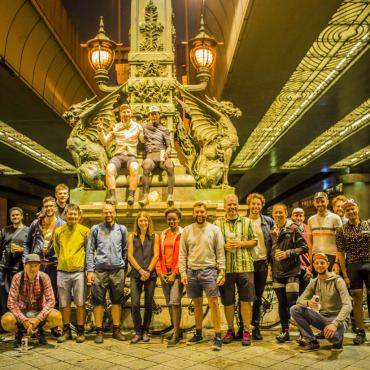
“Japan favoritism” or “Bias towards Japan”
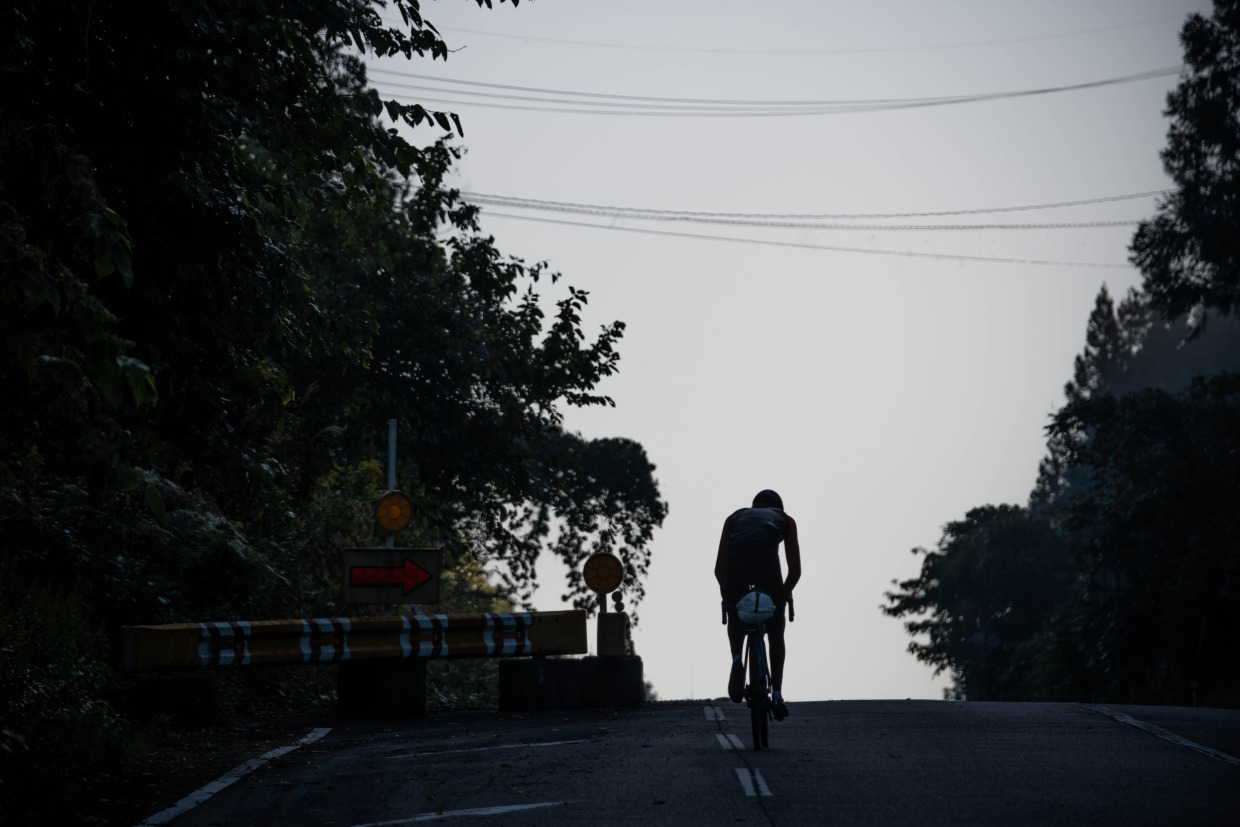
Far Away.
For the past decade, events and races known as ultra-long-distance have been emerging worldwide, surpassing the realm of long-distance cycling. These events cover thousands of kilometers, taking riders across countries and prefectural borders, over mountains and rivers, over the course of a week to half a month. With no aid stations or support vehicles, cyclists must rely solely on themselves until they reach the finish line. These grueling rides have been steadily gaining attention among cyclists in the know. While ‘brevets’ are well-known in Japan, recently, a niche group of cyclists has turned their passionate gaze toward ‘The Japanese Odyssey.’ This event and race, conceived by two Japanophile Frenchmen, spans thousands of kilometers across Japan, including abnormal routes.
In this series, we present a documentary-style essay on The Japanese Odyssey by photographer Eigo Shimojo, who has been captivated by and following this event.
Table of Contents
1. Prologue: On the Road
2. Starting Point Zero
3. ‘Arrival of the Black Ships’
Tokyo Nihonbashi, 3:00 AM.
Standing on the bridge are nameless amateur cyclists gathered from around the world.
As the darkness of night gradually gives way to dawn, the organizer, Emmanuel, raises his arm to signal the start. His silently descending arm serves as the checkered flag, and the group begins to ride, aiming for the promised land two weeks away.
Amidst the fall foliage, the cluster of wheels silently delves deep into the 3,000 km of mountains and rivers across Japan, dispersing as they race. From the moment of departure to reaching the finish line, it is a race against time, day and night. Yet, calling it a race is misleading, as there are no companions or pelotons to converse with—just a solitary, long journey of struggle.
This enigmatic event, which began in 2015, is called ‘The Japanese Odyssey.’
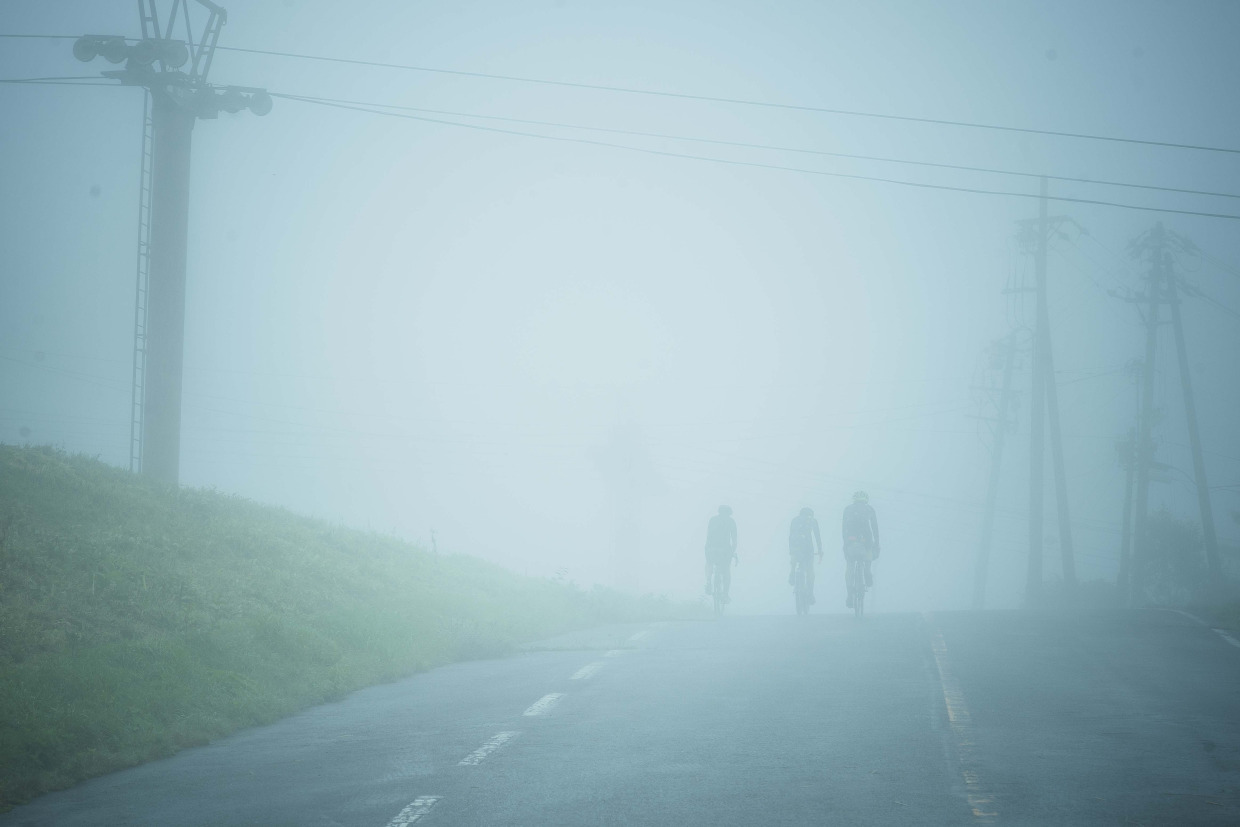
In the early autumn of 2016, just before dawn, I quickened my pace along the quiet city streets towards Nihonbashi.
At just before 3 AM, it was still dark, with the orange glow of the streetlights on the bridge barely visible from afar.
I could see several black silhouettes swaying on the bridge’s railing.
‘They’re earlier than I expected.’
With a growing sense of urgency, I adjusted my camera and moved closer to the shadows.
As I approached, their identities became clear.
About 20 large men, clad in cycling gear and equipped with bikepacking systems, were gathered—each of them foreign people.
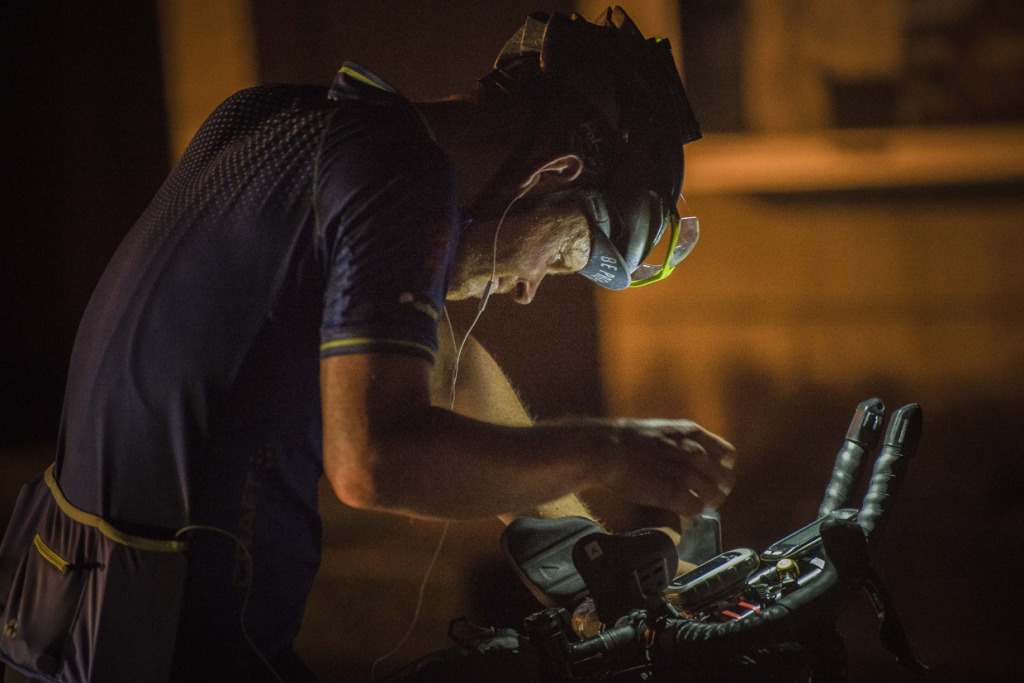
The tight apparel fits as snugly as a second skin, while the seemingly heavy gear is compactly strapped to the bicycles, appearing both practical and agile.
These men, embodying the paradox of being both heavy and light, are busily preparing for the journey ahead.
Some continue to stretch silently, while others fixate on their cycle computers.
An intangible tension fills the air.
As I feel the pressure of time slipping away, with so many moments I want to capture, I raise my camera and approach them unabashedly.
Ignoring first impressions and with only brief greetings, I begin to snap the shutter.

In early 2016, both bikepacking-equipped bicycles and the cyclists riding them were a rare sight on Japanese roads.
I was excited to witness firsthand the vibrant reality of bikepacking—something beyond just the gear itself. I felt a rush of exhilaration as this scene unfolded before me, far exceeding my expectations.
I was convinced that this was unmistakably the realm of ‘ultra-distance’ cycling.

While making a living as a commercial photographer, I have also made it my life’s work to capture the essence of cycling culture. In search of new movements, I spend my days scouring information both domestically and internationally.
In early 2015, I came across a website.
It was the English official site for an event called ‘The Japanese Odyssey’ (TJO).
As I read on, I was bewildered by the extremity of its content and was half-convinced—could this really be happening in Japan?
The journey from Hokkaido to Kagoshima, totaling approximately 2,500 km, includes four mountain checkpoints and spans two weeks.
Is this a race or a tour? Has the time finally come for the arrival of the ‘Black Ships’ in Japan?
These ‘Black Ships’ refer to the new wave of cycle races known as ‘ultra-distance’ races.

Starting in the early 2010s, ‘ultra-distance’ cycling races began to emerge simultaneously around the world, quickly becoming a hot topic among amateur cyclists.
Enthusiasts from various countries launched grassroots ultra-distance races to showcase their nations, using social media to recruit participants globally and report on the race progress themselves.
Although each race was small in scale, they were all driven by a passionate DIY spirit that turned the tables on amateurs.
Most importantly, the unique course landscapes posted on social media and the invaluable experiences of participants provided the best promotional effect.
‘Ultra-distance’ cycling swiftly crossed borders.
“To be continued”
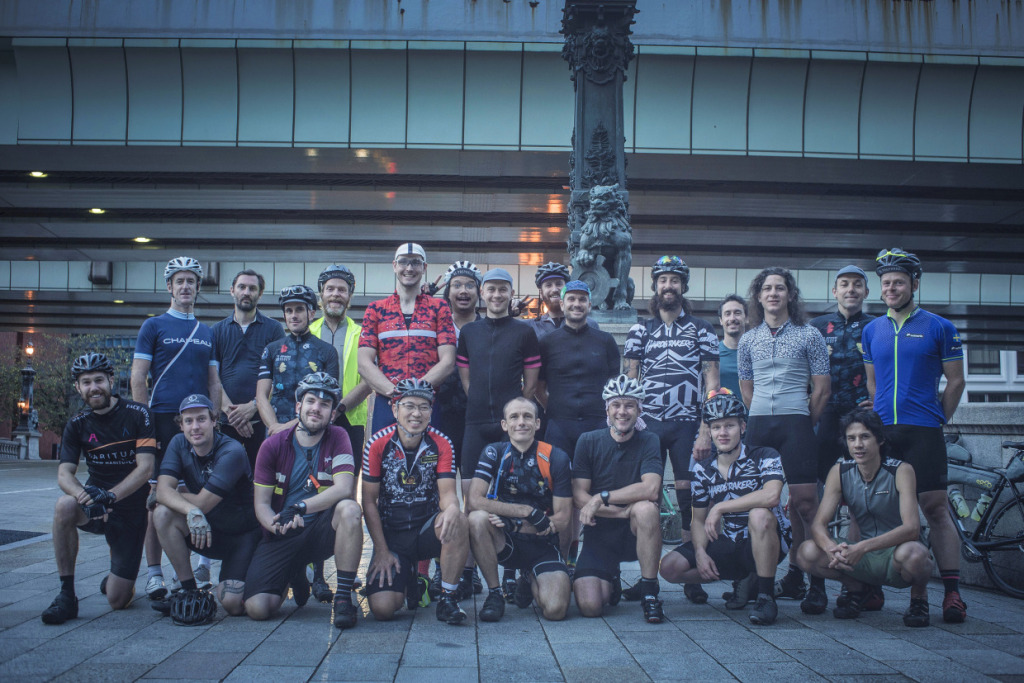
Next time
2015, aiming for July 18th.
🚴♂️The Japanese Odyssey Official Website
https://www.japanese-odyssey.com/
🚴♂️What is the Rumored Japanese Odyssey?
#01 Into the World of Ultra-Distance
#02 2015, aiming for July 18th.
#03 Toward The First Year of My “The Japanese Odyssey”
#04 A crazy setup.
#05 The mastermind behind the “mystery”
#06 “Japan favoritism” or “Bias towards Japan”
Text&Photo_ Eigo Shimojo
Profile
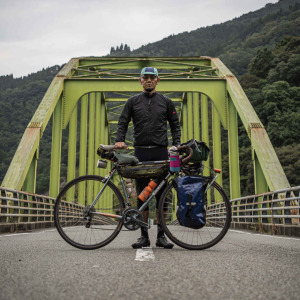
Eigo Shimojo
Born in Nagano Prefecture in 1974
Belongs to IPU Japan Photographers Union
He became independent in 2000 as a freelancer and established Greenhouse Studio, which handles a wide range of photography and video production.
His life’s work is pursuing underground HIPHOP and bicycle culture around the world.
Post Date:2024.08.09